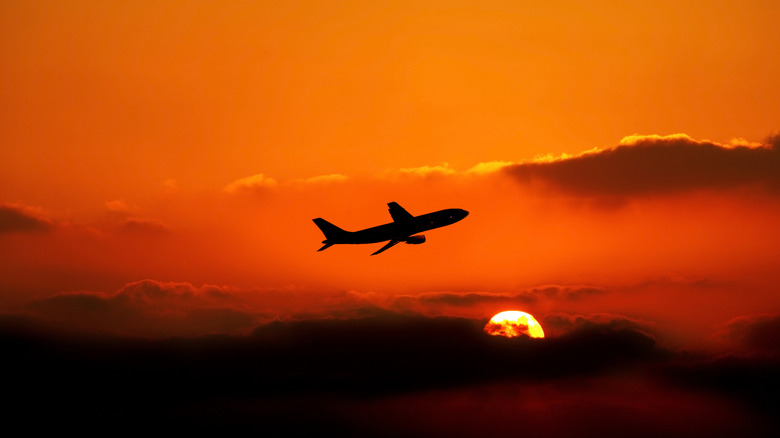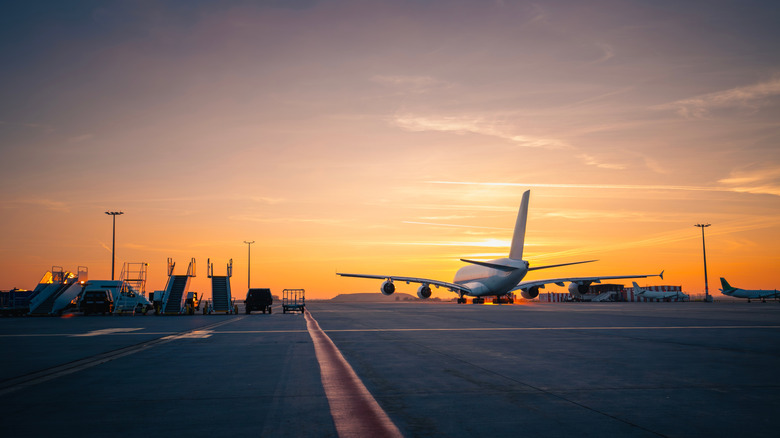What It Means When A Dangerous 'Heat Dome' Is Forecast, And How It Can Affect Your Air Travel Plans
Summer vacation is something a lot of people look forward to all year, but those same high temperatures that make a dip in the pool or a vacation to a Caribbean island like Virgin Gorda for a laid-back swim in crystal clear water so appealing can also seriously derail your travel plans. Unfortunately, the chances of high temperatures so intense that they impact travel plans are growing. The weather phenomenon known as a heat dome by many weather reports around the United States is becoming all the more frequent as the climate crisis worsens — and that could mean delays, turbulence, and even canceled flights.
The term heat dome, also known as a death ridge for its ability to produce deadly high temperatures, refers to an unpleasant phenomenon where high atmospheric pressure prevents hot air from rising. The hot air is trapped close to the ground. As the hot summer sun shines through it (which is likely because the high-pressure system makes the formation of clouds unlikely), temperatures increase. Until the high-pressure conditions change, the temperatures on the ground continue to climb. This is happening more and more in the United States, so summer travelers have to be prepared.
How do heat domes affect airplanes?
It's easy to understand why high temperatures can be an issue for people, but why are they a problem for airplanes? The truth is heat is bad for planes in a few ways. As hair gets hotter, it becomes thinner and less dense, despite how thick and soupy summer days can feel sometimes. That thinner air makes it harder for airplane wings to generate lift. The propellers may also not be able to generate enough thrust to get the plane going. Bigger planes are likely to have more issues, even if you're flying with some of the safest airlines in the world.
Pair this with the increased risk of turbulence that comes with high temperatures, and a heat dome might make you think twice about getting on a plane this summer. Sure, it's still safe to board, but don't be surprised if the airline is forced to hold or cancel flights when higher temperatures are cooking your region. Savvy summer travelers usually won't book night flights to avoid thunderstorms, but as summer temperatures continue to climb and heat domes become more common, they may have to prioritize choosing flights when the temperature is slightly cooler.

